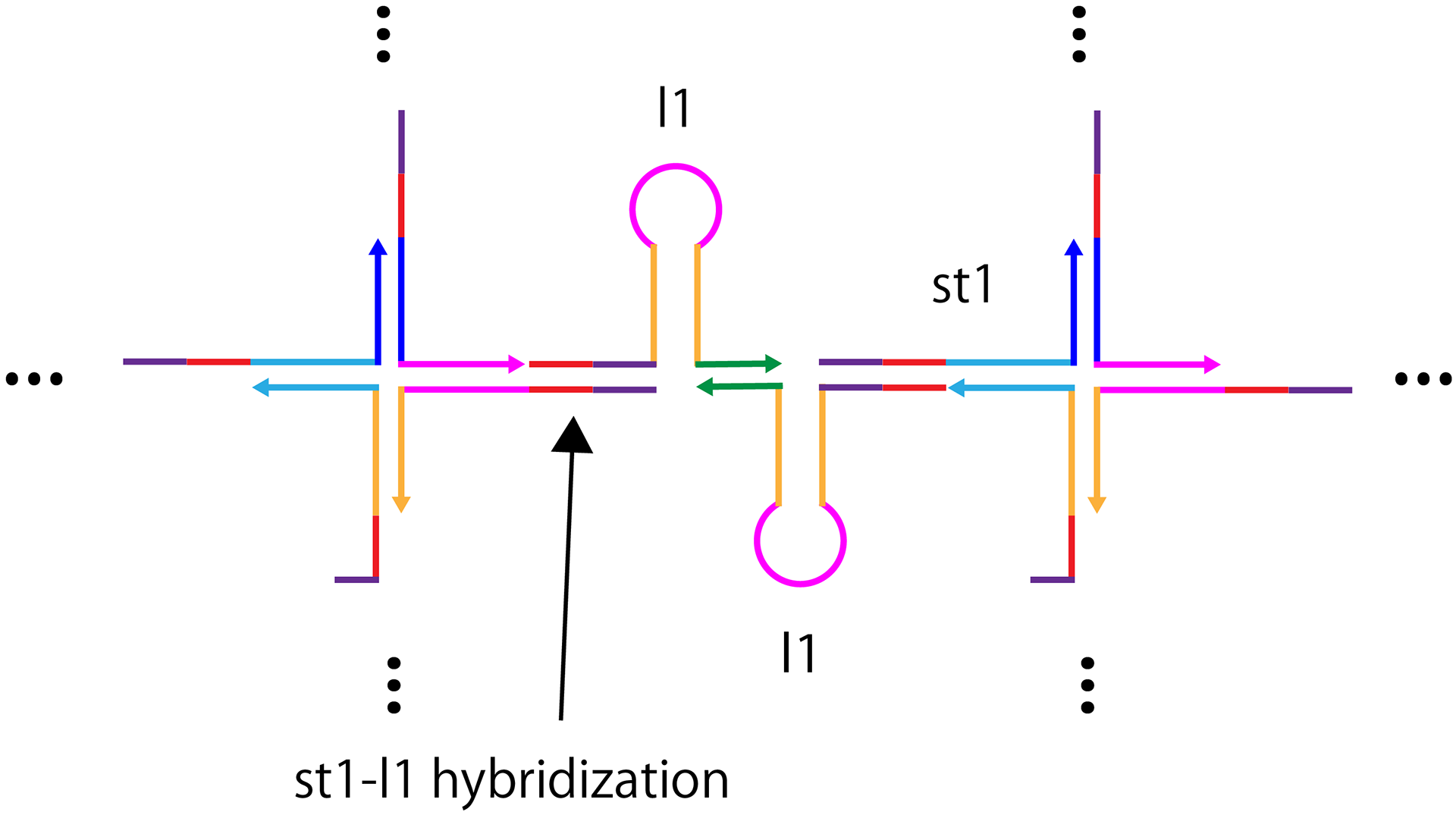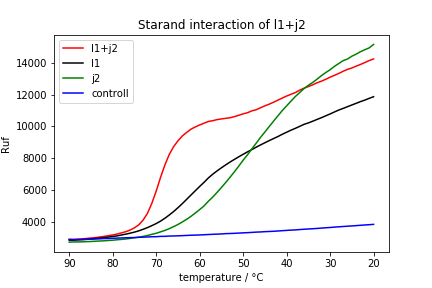Object
To search the thermodynamic stability of swelling and shrinking parts
In the last chapter, we designed sequences of DNA hydrogel components and their expected reactions. In order to reveal whether our designing strands can attach to X-motif DNA hydrogels, we carried out melt curve experiments for each pair of ssDNAs.
Protocol
Samples are prepared as Table1. After setting the samples in thermal cycler (BioRad-CFX), we heated samples to 90℃ and then cooled to 20℃ by 1℃/12sec. Fluorescence is reported by Evagreen, which emits high level of green dye reacting to double strand DNA.
Table1. Protocol of ,melt curve experiment
Result
Combination of st1 and l1
st1-l1 multiplex have 22bp matched length. According to the result, we could observed great amplification of signal in st1+l1 sample while other samples show lower fluorescence. The melt temperature of the multiplexed sample was 63℃.



Figure 1-1 Meltcurve of st1 and l1 multiplex
Combination of l1 and j2
l1-j2 multiplex have 22bp matched length. The melt temperature of the sample was 69℃.



Figure1-2 Meltcurve of l1 and j2 multiplex
Combination of l1 and j3
l1-j3 multiplex have 20bp matched length. The melt temperature of the sample was 67℃, which is a bit lower than l1-j2 complexed sample.



Figure1-3 Meltcurve of l1 and j3 multiplex
Combination of j3 and j3'
j3-j3’ multiplex have 25bp matched length. The melt temperature of the sample was 74℃ which is the highest temperature in all the samples.



Figure1-4 Meltcurve of j3 and j3' multiplex
Discussion
In all cases, the melt temperatures of the combinations were much higher than single. Therefore, l1, j2 , j3 and j3’, the parts of swelling and shrinking units could hybridize with correct pairs.
According to the melt curve temperature, the stability of hybridization seemed to correspond to the length of matched bp.
However, l1-j3 might have lower stability comparing to the others. For example, comparing l1-j2 and l1-j3 hybridization, l1-j2 had higher melt temperature and also higher level of fluorescence signal. This result suggested that l1-j2 multiplex has higher free energy comparing to l1-j3. The sequence of j3 is extended 5bp from j2 which mismatch l1, so they would give electrical force which work as resilience.